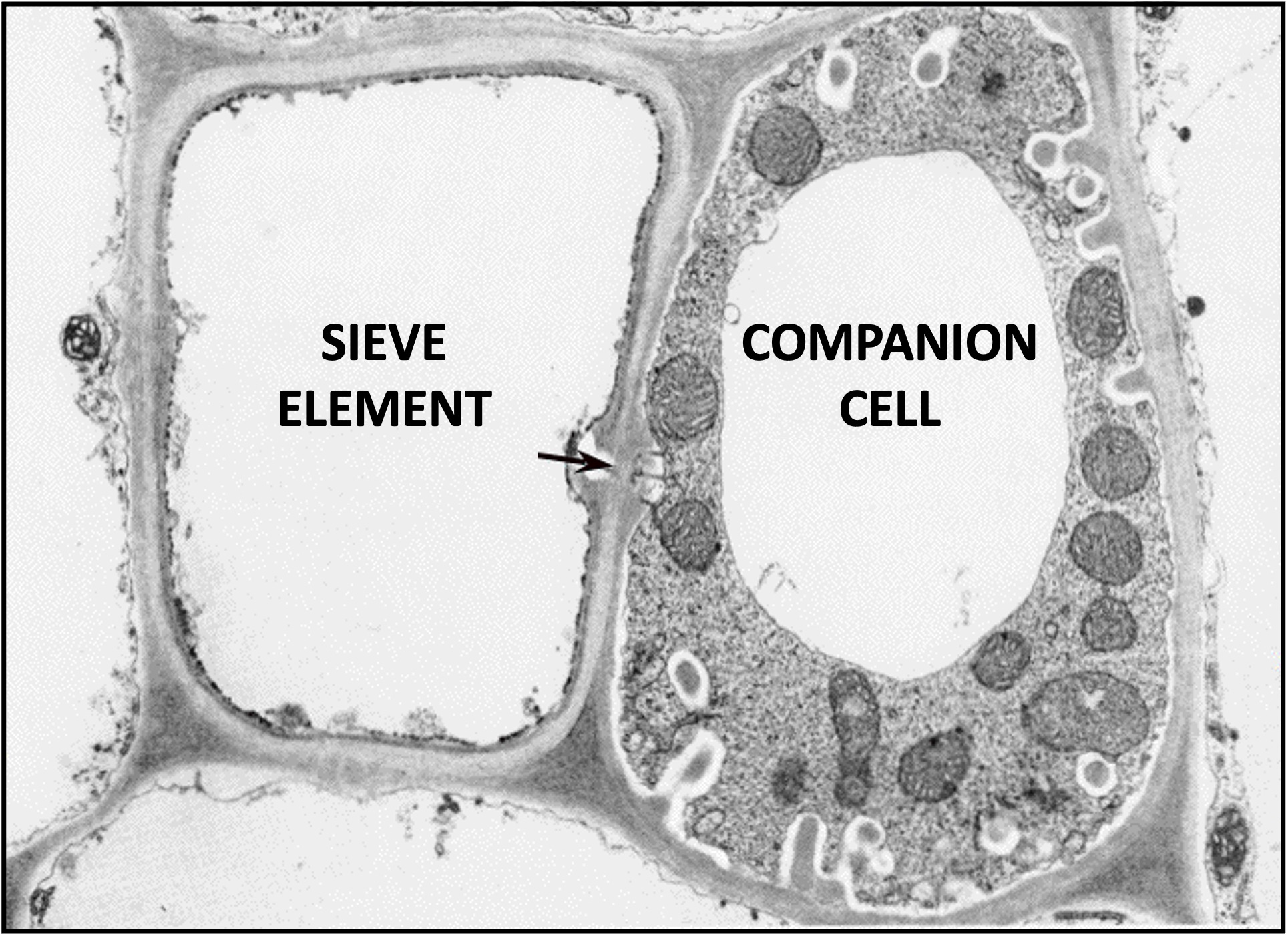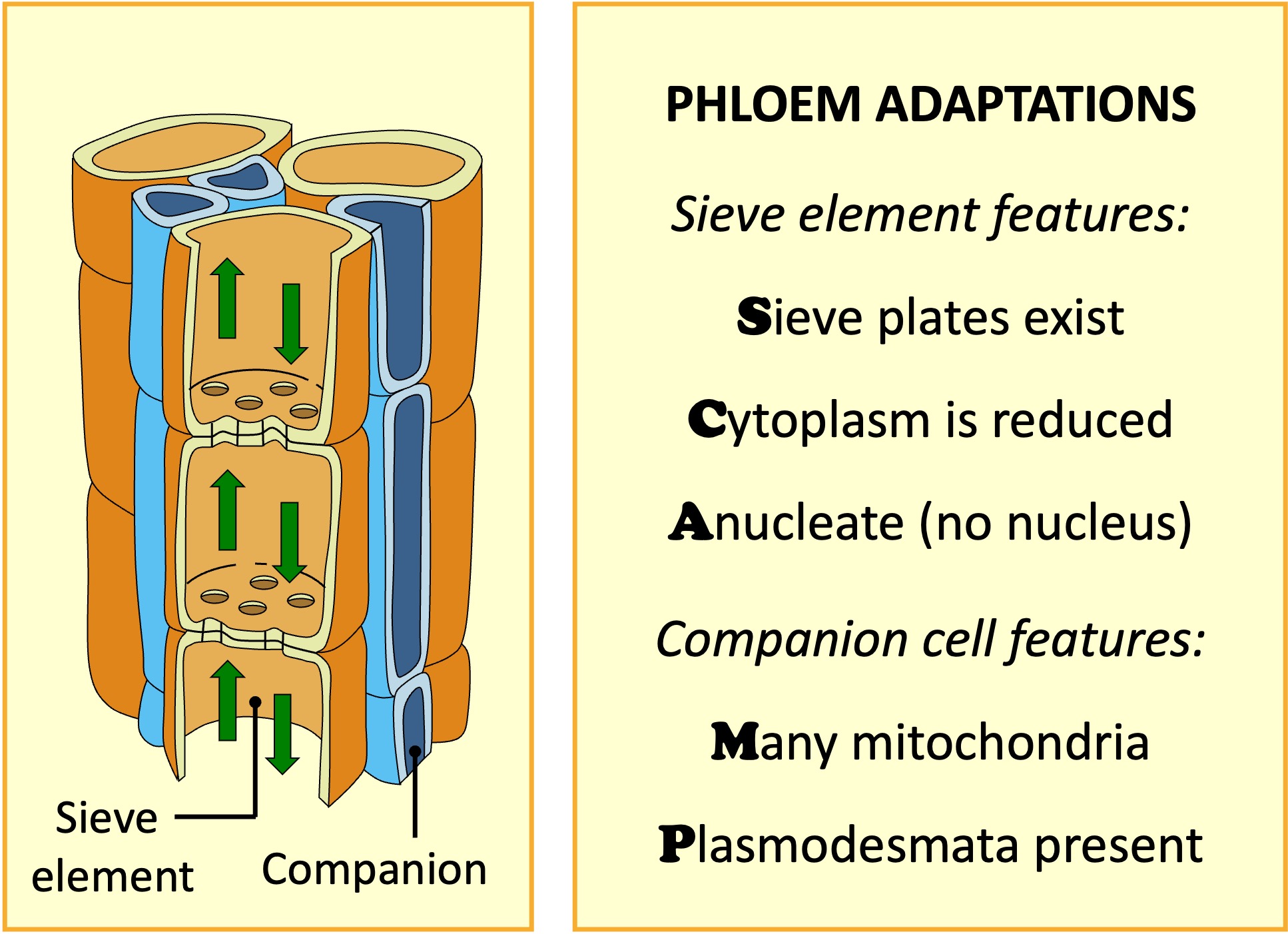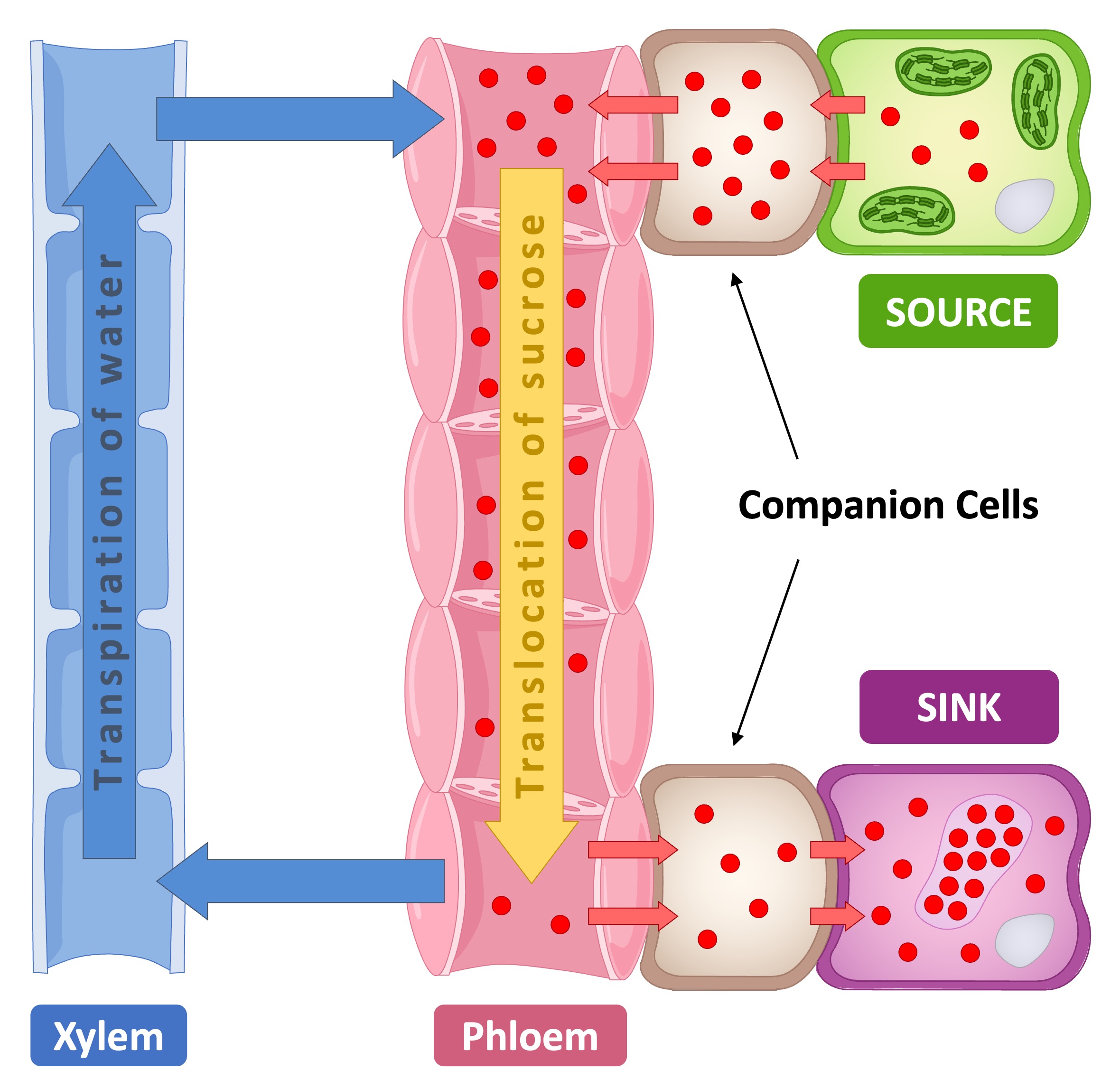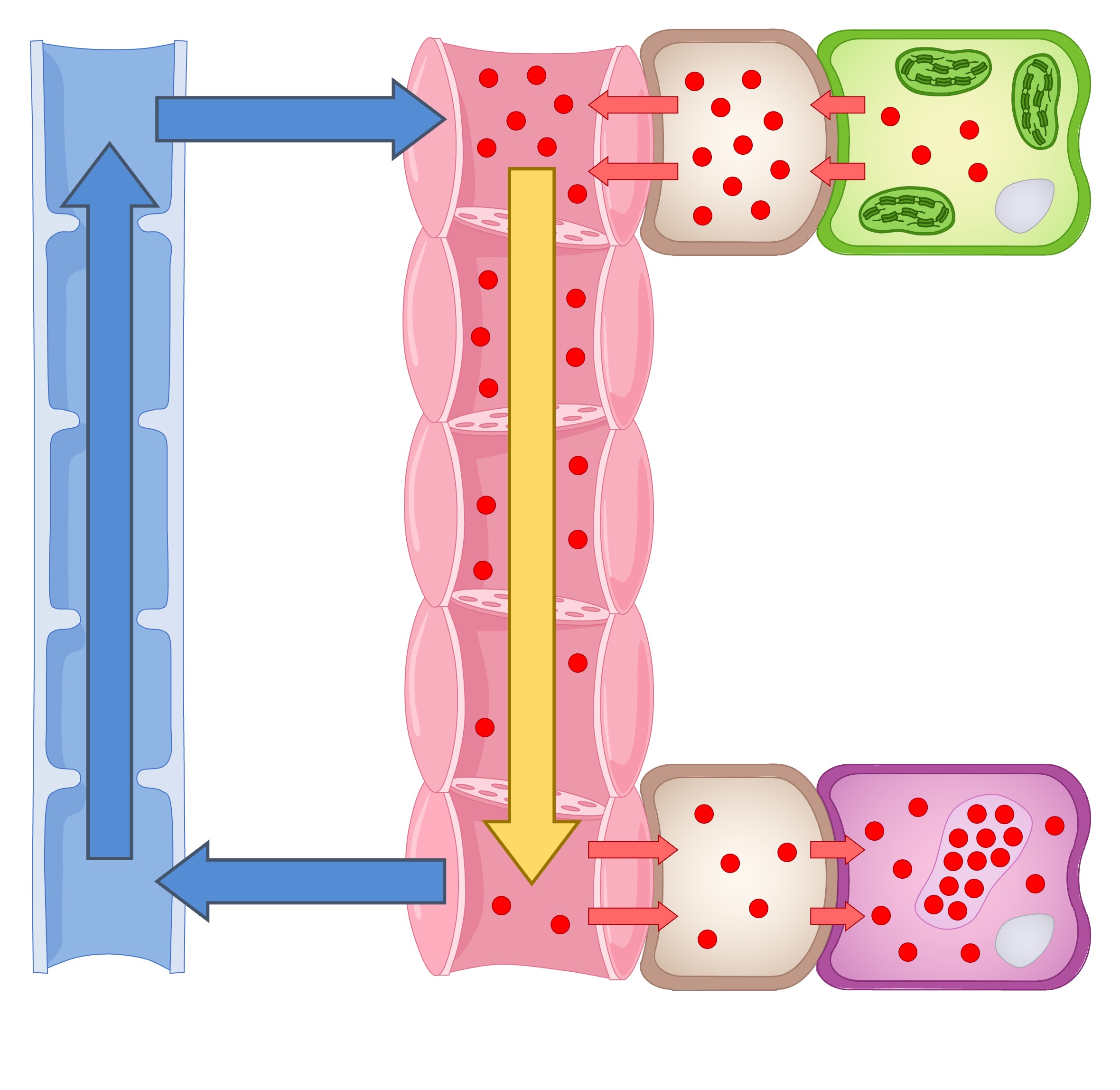

Phloem Transport
Translocation is the movement of organic compounds (e.g. sugars, amino acids) from sources to sinks
-
The source is where the organic compounds are synthesised – this is typically the photosynthetic tissues (leaves)
-
The sink is where the compounds are delivered to for use or storage – this includes the roots, fruits and seeds
-
Organic compounds are transported via a vascular tube system called the phloem as part of a viscous fluid called sap
Phloem Structure
Phloem sieve tubes are primarily composed of two main types of cells – sieve element cells and companion cells
-
Plasmodesmata connect the sieve elements and companion cells to mediate symplastic exchange (continuous cytoplasm)
Sieve elements are the long and narrow cells that are connected together to form the phloem sieve tubes
-
Sieve elements are connected by sieve plates at their transverse ends, which are porous to enable flow between cells
-
Sieve elements have no nuclei and reduced cytoplasm and organelles to maximise space for the translocation of materials
-
The sieve elements also have thick and rigid cell walls to withstand the hydrostatic pressures which facilitate flow
Companion cells provide metabolic support for sieve elements and facilitate loading and unloading at sources and sinks
-
They possess an infolding plasma membrane which increases SA:Vol ratio to allow for more material exchange
-
Have many mitochondria to fuel the active transport of materials between the sieve tube and the source or sink
-
Contain appropriate transport proteins within the plasma membrane to move materials into or out of the sieve tube
Sieve Tube Adaptations


Active Translocation
At the source (e.g. leaves), the active transport of sugars into the phloem by companion cells makes the sap solution hypertonic
-
This causes water to be drawn from the xylem via osmosis (water moves towards higher solute concentrations)
-
Due to the incompressibility of water, this build up of water in the phloem causes the hydrostatic pressure to increase
-
This increase in hydrostatic pressure forces the phloem sap to move towards areas of lower pressure (mass flow)
-
Hence, the phloem transports solutes away from the source (and consequently towards the sink)
At the sink (e.g. roots, fruits, seeds), the solutes within the phloem are unloaded by the companion cells
-
This causes the sap solution at the sink to become increasingly hypotonic (lower solute concentration)
-
Consequently, water is drawn out of the phloem and back into the xylem by osmosis
-
This ensures that the hydrostatic pressure at the sink is always lower than the hydrostatic pressure at the source
-
When organic molecules are transported into the sink, they are either metabolised or stored within the tonoplast of vacuoles
Translocation in Plants






